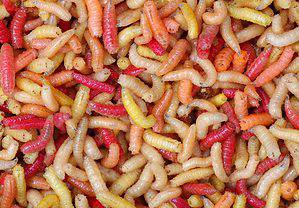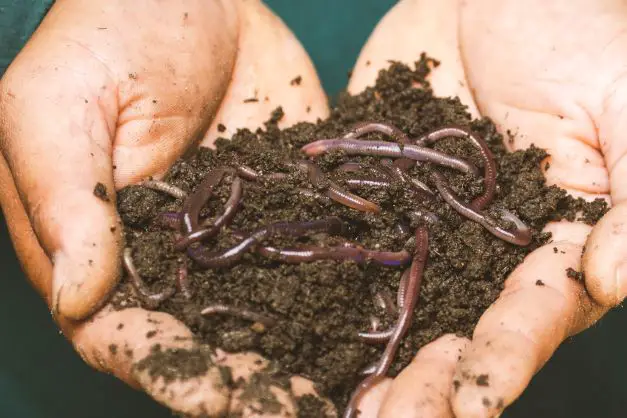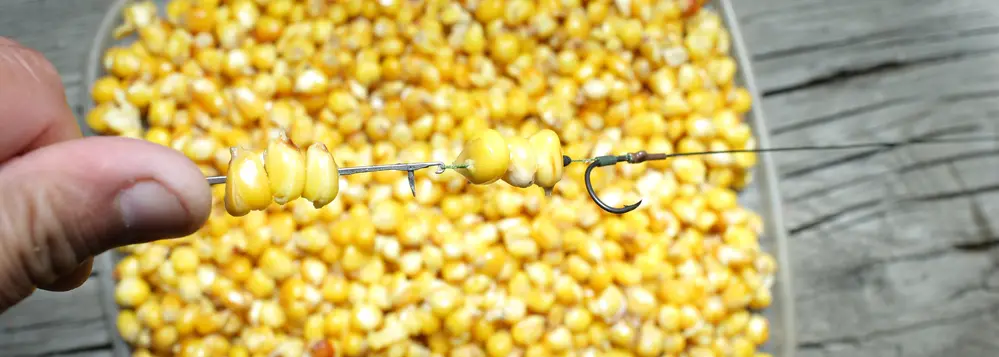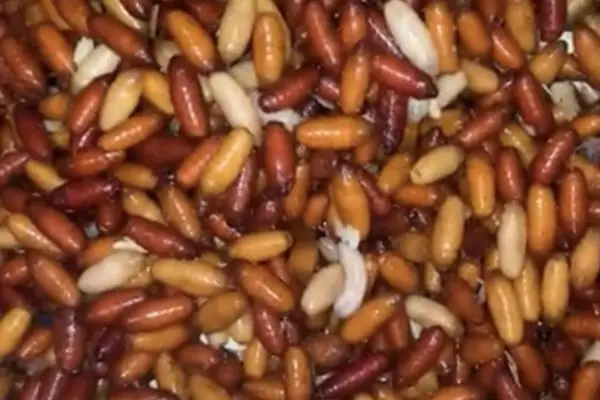Disclosure: Some posts contain affiliate links, which earn us a commission if you make a purchase through them. Positive Fishing © participates in various affiliate networks including the Amazon Services LLC Associates Program.
In the world of angling, selecting the right bait is crucial to the success of any fishing trip. It’s the difference between a fruitful day by the water and going home empty-handed. Understanding the most effective bait and how to use them will dramatically increase your chances. Throughout years of coarse fishing, I’ve come to appreciate the effectiveness of certain baits that consistently deliver results.
This article shares essential insights into the most effective baits for coarse fishing, drawing on personal knowledge and practical application. I’ll guide you through the selection and application of these baits and offer advice on where to buy them and how to store them correctly.
Whether you’re a seasoned angler or wetting your line for the first time,
Key Takeaways
- Choosing the right bait significantly increases catch rates.
- Each bait type has a unique application method for attracting coarse fish.
- Proper bait storage ensures lasting freshness and effectiveness.
Using Maggots As Bait

Suitable Species for Maggot Baits
I’ve found that maggots serve as a universal bait, attractive to a broad range of freshwater fish. Red and white maggots are particularly useful as they draw the attention of various species. A mixed pint of red, white, and sometimes yellow maggots provides ample bait for several hours by the water, proving a cost-effective choice. Large whites, derived from the blue bottle fly, are suitable for all fish due to their size and are an all-purpose option. Smaller fish tend to go after squats and pinkies, which originate from houseflies and greenbottle flies.
| Fish Type | Fly Type | Size | Purpose | Cost | Availability | |
| Large Whites | All fish | Bluebottle | Large | Any situation | $ | Easy |
| Squats | Smaller fish | Housefly | Medium | Feed bait | $$ | Pre-Order |
| Pinkies | Smaller fish | Greenbottle | Small | Difficult fishing days | $$$ | Pre-Order |
Maximising Effectiveness with Maggots
Loose-feeding maggots is a tactic I employ to pull fish towards my position. Concentrating feed into one area is essential, and hand-feeding works well when fishing close, up to about 6 metres.
Beyond that, using a pole cup or incorporating maggots into a groundbait mix will do the trick. For those casting their lines a fair distance from the bank, I find a catapult serves the right purpose to distribute the bait accurately over a greater distance.
Attaching Maggots to the Hook
The most effective way I’ve found to hook maggots is by piercing them through their broader end, allowing full freedom for wriggling, which is vital in attracting fish. At times, hooking a maggot from the pointed end stops the maggots from “turning over” themselves (in effect double hooking themselves), which can result in missed bites for small fish.
Depending on the situation and the target fish, I might thread a single maggot or a bunch onto the hook.
Storing Maggots
I keep maggots in a cool environment, such as a refrigerator, to delay their development into casters. Using a ventilated bait box, I layer the bottom with maize meal, sawdust, or bran. This “bedding” material helps to absorb moisture, extending their usability and preventing sweating, which is particularly important on warmer days.
Using Worms As Bait

Worms although expensive work well throughout the year
The Variety of Fish Attracted by Worms
The appeal of worms as bait is their irresistible scent, taste, and movement, which can entice an array of fish species. Large or small, freshwater fish such as salmon and trout find worms very appealing, and they are an excellent choice for fishermen looking to catch various fish types.
| Fish Type | Size | Purpose | Where to find | |
| Lobworms | Any fish – Typically large | Large | Single | Lawns |
| Redworm | Any fish – Medium/Small | Medium | Single/Bunch | Compost |
| Brandling | Small – Medium/Small fish | Small | Single/Bunch | Compost and manure |
Optimising Worms for Fishing
Worm preparations can significantly enhance fishing outcomes. My preferred approach involves finely chopping the worms and combining them with groundbait to create an attractive scent trail in the water. For hook application, creating a ‘cocktail’ by adding other baits, such as maggots with a single worm, increases the likelihood of a successful catch.
Attaching Worms to Hooks
When attaching lobworms to hooks, I like to use just the tail end or hook them through the head. With redworms and brandlings, presenting them as a bunch or singly, possibly paired with another type of bait for a ‘cocktail’ effect, works well.
To ensure the worm appears natural and lively, hook it securely, allowing a portion of the hook to remain slightly exposed, aiding in the fishing process.
Proper Worm Storage Practices
Maintaining the freshness of worms is crucial; I keep mine in a container with partially moistened sphagnum moss that cleans and strengthens them. Removing deceased worms promptly is vital to avoid affecting the living ones and storing them in a cool environment, preferably below ten °C, such as a shed or garage, avoiding tight, airless containers like jars or tins.
Note: Bloodworms are not worms but from a fly (midge); you can learn more about fishing with bloodworms and jokers
Sweetcorn As Bait

Sweetcorn has been a favourite bait option for me for many years
Fish Species Attracted to Sweetcorn
In my experience, sweetcorn is irresistible to various fish, particularly in European waters. Some of the species that have a preference for this maize bait include roach, bream, tench, and carp. They seem drawn to corn’s vibrant colour and subtle sweetness.
Maximising Sweetcorn for Fishing
Using sweetcorn effectively is straightforward due to its ease of use and visibility. A single kernel, possibly two, on the hook is optimal. The more plump and rounded the kernel, the better it sits on the hook. Distributing sweetcorn as loose feed or incorporating it into groundbait can significantly boost your chances due to its weight, causing it to sink quickly, settle on the bottom, and attract fish to your spot.
In my early fishing trips in the 1970s, anglers hardly ever used them. I have always used sweetcorn for catching lake estate tench using the “laying-on” method and have had great results fishing corn. Even today, corn remains one of the baits I always have in my tackle bag.
One of sweetcorn’s greatest attractions is its availability and its convenience. It needs no preparation; you use it as a hook bait straight from the can. Canned corn is the most popular, but frozen kernels can be used and are slightly cheaper to buy in bulk from the supermarket.
Attaching Corn to the Hook
The technique is simple: select a kernel and pierce it with the hook point until it’s visible.
My hook of choice is a spade end hook, which provides a secure base for the knot, ensuring the bait stays put. I’ve found no need for additional attractants; sweetcorn’s natural colour and scent are sufficient.
Sweetcorn Preservation Tips
Once you’ve opened a can of sweetcorn, the remainder should be refrigerated and used within three days. However, they can also be frozen for future use. For those who purchase frozen kernels, I recommend only taking what you’ll use to each fishing session – do not refreeze once thawed.
To maintain the quality of your bait, avoid exposing open cans of sweetcorn to direct sunlight, as this can spoil the kernels rapidly.
Bread As Bait
Suitable Fish Species for Bread Bait
Bread is an effective and affordable option for fishing bait that tends to attract a wide range of species. It is particularly successful in the pursuit of carp and tench. The simplicity of bread as bait makes it a wise choice for both novice and experienced anglers.
Maximising Bread’s Potential
In my experience, using bread in flake form can be quite productive. To do this, I take a piece around the size of a £2 coin, ensure the hook is securely placed in the centre, and gently pinch the bread to keep it affixed to the hook’s shank.
Employing a bread punch creates a clean, bullet-like, effective presentation, especially during the colder months or when fishing on canals. It consistently delivers when targeting smaller fish.
Attaching Bread to the Hook
Securing bread to the hook can be challenging as it can easily come off during casting. For a more secure attachment, I’d suggest a side cast to reduce the risk of bread detachment. Using a hook no smaller than size #14 is also something I find to be crucial for all bread bait types; ensuring the point of the hook remains clear enhances the likelihood of hooking into a fish.
Practical Bread Storage
To preserve the freshness of bread for fishing trips, I always store it in an airtight container, away from direct sunlight. Bread tends to have a short shelf life when used as bait, often just suitable for a session. Any leftover bread from your fishing trip can be toasted and turned into homemade ground, ensuring no wastage.
Remember, the softness and freshness of the loaf are vital for enticing fish and keeping the bread attached to your hook, especially when using the crust for a surface lure. Freshness is paramount; therefore, buying bread no more than a couple of days before you go fishing is something I highly recommend.
Note: Although bread paste is mentioned in this topic, using and preparing it is different. I have put a separate topic on pastes in another article.
Casters

Casters in varying forms of turning to reddish-orange.
Target Species for Casters
Casters, the pupal stage of a fly’s development, are highly attractive to various freshwater species. In my experience, species such as roach, chub, and dace exhibit a particular fondness for these baits. Being a versatile bait, casters offer a significant advantage in enticing a wide range of fish.
Maximising Caster Bait Effectiveness
Upon arriving at the fishing location, my initial step is to cleanse the casters by rinsing and eliminating any that float, a sign they may not be fresh.
Loose-feeding casters prove effective at close range. Secondly, integrating them into groundbait can be beneficial, especially in clear conditions during warmer months. Should the water be murky, I often revert to using maggots instead. Quality casters should display a uniform reddish-orange colour, indicating prime condition.
Attaching Casters to the Hook
Depending on conditions, I conceal the hook within the caster when hooking, selecting small hook sizes between #14 and #18. I gently pierce the caster’s head with the hook without splitting the delicate outer shell.
When fishing deeper or faster flows, I include casters within the groundbait. Creating a cocktail by combining casters with other baits, particularly worms or maggots, can prove highly effective.
Preservation of Casters
To preserve the freshness of the casters, wrapping them in a damp cloth and storing them in a container overnight aids in achieving a consistent colouration. It is optimal to store them in a fridge, allowing their use for up to a week.
Care must be taken in storage as casters spoil quickly and are a more costly option compared to maggots.
Bait Out
In my experience with fishing, I’ve discovered that certain baits stand out for their effectiveness and ease of use. I strongly suggest starting with these five reliable baits for anyone new to the sport. They’re not just cost-effective; they also offer an excellent chance of success.
I thoroughly enjoy sharing my fishing insights and knowledge. I trust this piece adds to your understanding and enjoyment of fishing,
- 5 Best Fishing Bags For Getting Your Gear Organized - January 13, 2025
- 4 Essential Surf Fishing Rigs - January 11, 2025
- How To Know The Sex Of A Fish You Have Caught? - December 9, 2024

